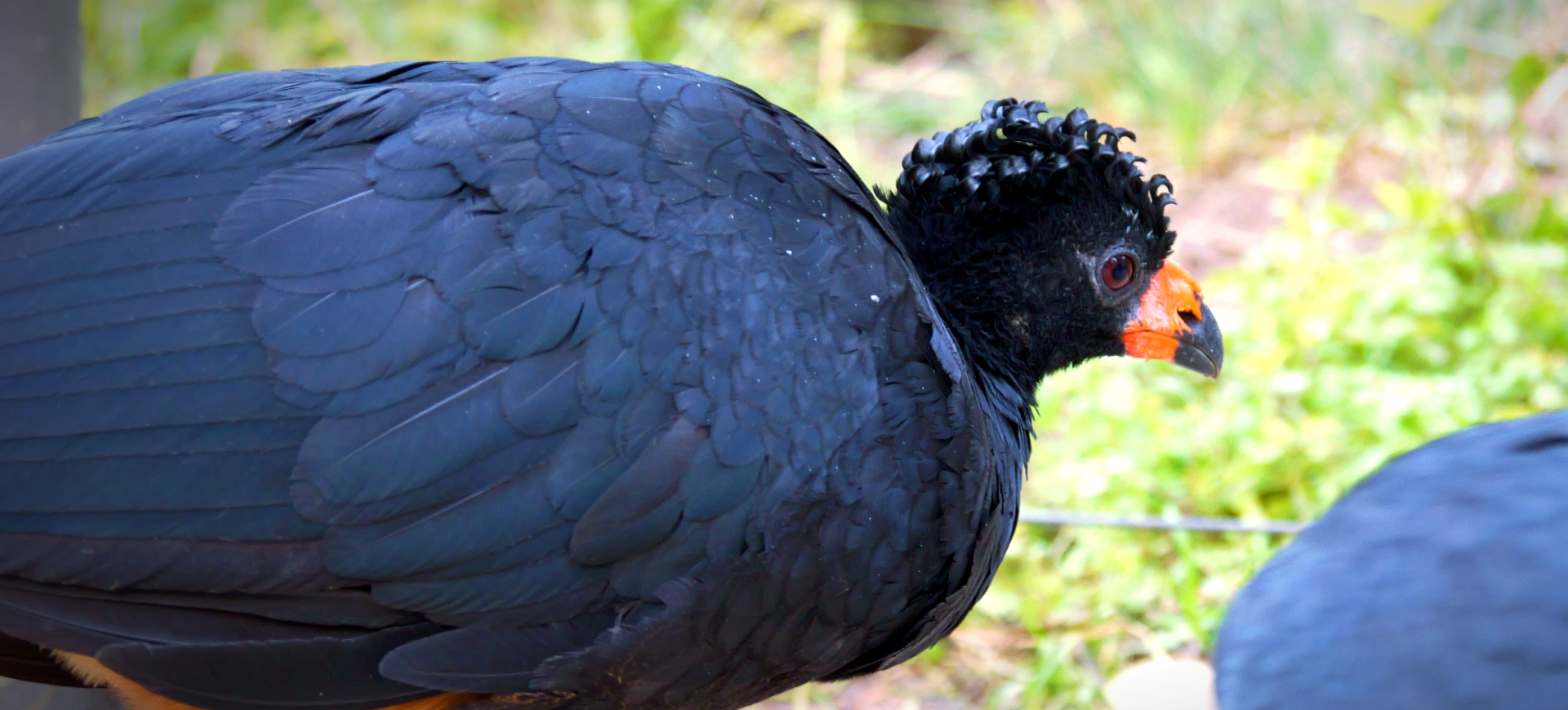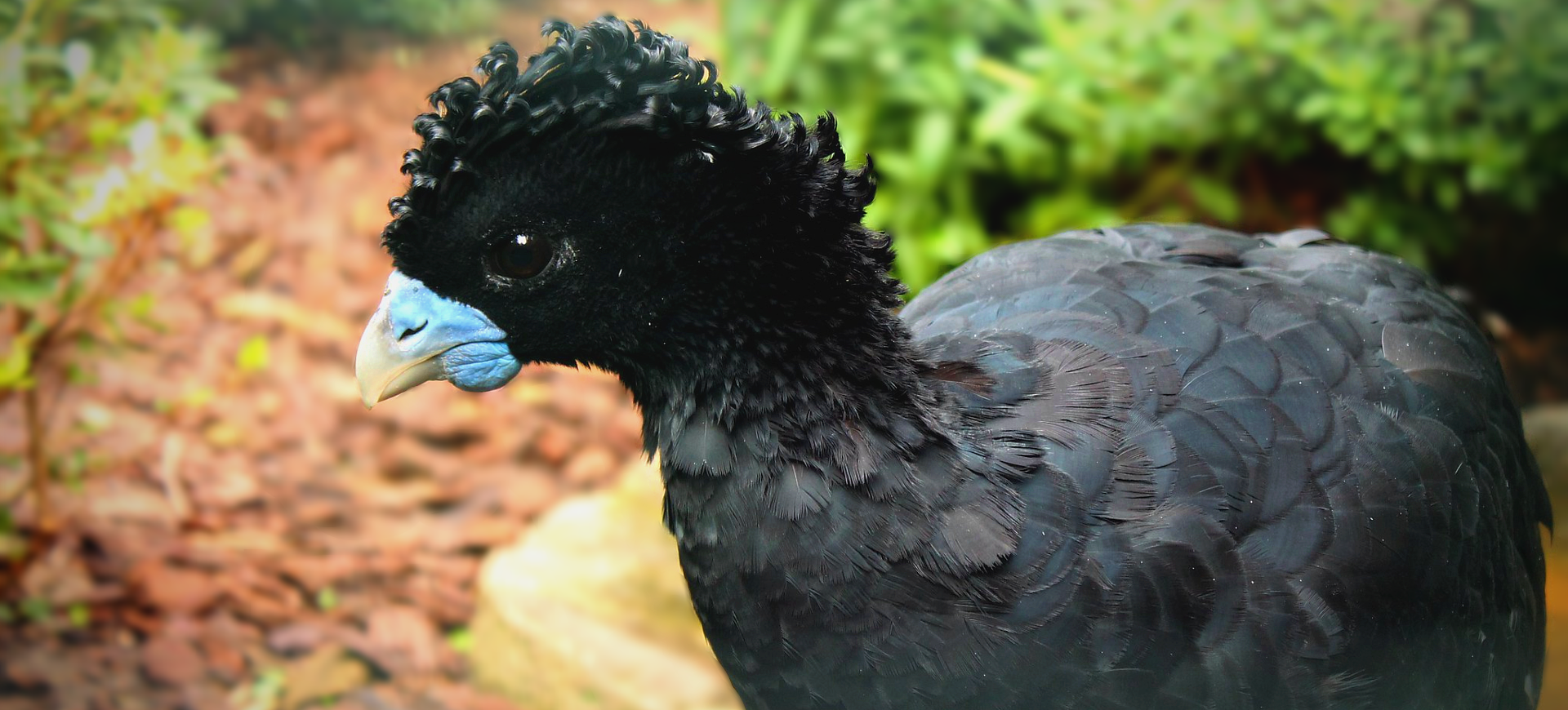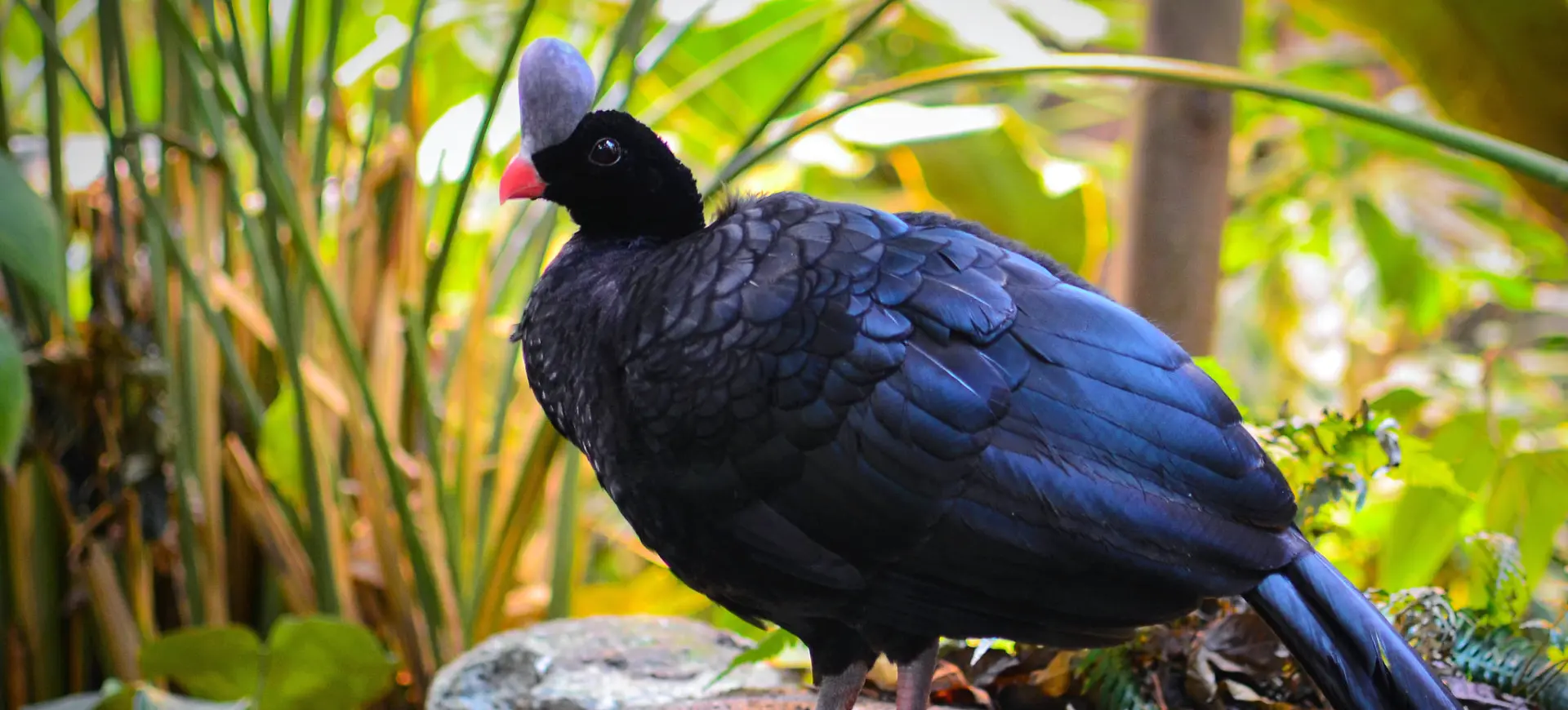Overview
The Plain Chachalaca is a large bird found primarily in the tropical and subtropical regions of the Americas, particularly from southern Texas in the United States through eastern Mexico and Central America to northwestern Colombia. Characterized by its long tail and strong legs, it moves through lowland forests and scrublands with agility, often staying hidden among thick foliage. This bird is known for its raucous and distinctive “cha-cha-lac” calls, usually heard in the early morning, which is how it got its name. While not migratory, the Plain Chachalaca tends to be quite territorial and remains within a well-defined home range throughout the year.
The species exhibits a predominantly olive-brown plumage with a paler underbelly, and its neck is streaked with white, giving it a unique appearance in its habitat. Males and females look similar, but juveniles can be distinguished by their less defined neck streaks and duller coloration. These birds are primarily frugivorous, feasting on a wide variety of fruits. Still, they also consume leaves, seeds, and occasionally insects, making them an important part of the ecosystem regarding seed dispersal.
The social structure of the Plain Chachalaca is quite interesting; often found in small groups or family units, they exhibit complex behaviors and communication patterns. During the breeding season, their calls become more frequent and intense, establishing territories and attracting mates. Despite habitat loss and hunting pressures in some areas, they have adapted well to human-altered landscapes, often seen in rural and suburban areas where food sources and shelter are available.
Taxonomy
Kingdom
Phylum
Class
Order
Family
Genus
Species
Sub Species
Type
Physical Description:
The Plain Chachalaca is a medium-sized bird, with adults typically measuring around 22 inches long and exhibiting a relatively long tail, contributing significantly to their overall size. They have a fairly uniform olive-brown plumage, which provides excellent camouflage in their forested habitats. The underparts are paler, and the most distinct feature is the white streaking on the neck, which varies in intensity among individuals. Their strong legs and feet are adapted for scratching and foraging on the ground and for perching in trees.
Their head is small in proportion to their body, with a fairly short beak adapted for eating fruits and seeds. The eyes are dark and alert, reflecting their cautious nature. The rounded wings are typically used for short flights, as these birds are not long-distance fliers. Sexual dimorphism is minimal, but males may be slightly larger and have more pronounced neck streaking than females.

Lifespan: Wild: ~10 Years || Captivity: ~20 Years

Weight: Male: 1.1-1.8 lbs (500-800g) || Female: 1.0-1.7 lbs (450-770g)

Length: Male & Female: 21-25 inches (53-63 cm)

Wingspan: Male & Female: 18-22 inches (45-55 cm)

Top Speed: 15 mph (24 km/h)
Characteristic:
Native Habitat:
The Plain Chachalaca is native to various habitats, including tropical and subtropical forests, thickets, and scrublands. They are particularly associated with areas with dense cover and abundant fruiting trees, providing food and shelter. Their preferred habitats often include riverine forests, edges of forests, and secondary-growth areas where they can find a variety of food sources.
While they are primarily found at low elevations, these birds can also be spotted in hillside forests and agricultural areas where fruit trees are common. Adaptability to altered landscapes has allowed them to survive in areas where some forests have been cleared as long as sufficient cover and food resources remain. They are often seen in groups, moving through the lower and middle levels of the forest, rarely venturing into the high canopy.
Biomes:
Biogeographical Realms:
Continents:
Countries:
Diet:
Diet & Feeding Habits:
The Plain Chachalaca is primarily frugivorous, with a diet consisting largely of various fruits, berries, and seeds in its habitat. They are known to eat the fruits of both wild and cultivated plants, making them important seed dispersers in their ecosystems. In addition to fruits, they consume leaves, flowers, and occasionally insects, especially during the breeding season when the demand for protein is higher.
Feeding usually occurs in small groups, where individuals communicate with soft clucking noises as they move through the trees or forage on the ground. Their foraging behavior is quite organized, often starting at one end of a branch and working their way to the other, plucking off fruits and leaves as they go. They visit the same food sources regularly and can become quite tame in areas where they are not hunted, sometimes even accepting food from humans.
Mating Behavior:
Mating Description:
The mating system of the Plain Chachalaca is primarily monogamous, with pairs forming strong bonds during the breeding season. Duets between the male and female, a common behavior among members of the Cracidae family, reinforce these bonds. The breeding season is usually timed with the onset of the rainy season, which varies depending on the geographical location.
Nests are simple platforms constructed of twigs and leaves, usually placed in trees or shrubs a few meters off the ground. Both parents are involved in the construction of the nest, as well as in the incubation and care of the chicks. Typically, the female lays between two to four eggs, which are incubated for about 24 days. After hatching, the chicks are precocial and can leave the nest within a few days, though they remain dependent on their parents for food and protection for several weeks.
Reproduction Season:
Birth Type:
Pregnancy Duration:
Female Name:
Male Name:
Baby Name:
Social Structure Description:
The Plain Chachalaca is a social bird, typically seen in small groups or family units. These groups often consist of a breeding pair and their offspring, with older offspring sometimes staying with the parents for an extended period. They maintain a hierarchy within the group, with dominant individuals getting preferential access to food and roosting sites.
Interactions within the group are characterized by various vocalizations used to communicate location, alert to predators, and reinforce social bonds. During the breeding season, groups become more territorial, with pairs defending their nesting area against intruders. Their social structure and communication are crucial to their survival, helping them locate food and avoid predators in their dense forest habitats.
Groups:
Conservation Status:
Population Trend:
The Plain Chachalaca is currently not considered at immediate risk of extinction, with the IUCN listing them as of “Least Concern.” They are relatively widespread within their range and have shown adaptability to altered environments. However, in some areas, habitat loss has affected their populations due to deforestation for agriculture and urban development.
Despite these threats, they remain common in many areas, and in some regions, they have even benefited from the growth of fruiting trees in agricultural and suburban landscapes. Local populations may vary in density depending on habitat quality and hunting pressure. In areas where they are hunted, populations tend to be more secretive and less vocal. Still, they can be quite conspicuous in protected areas and are a favorite among birdwatchers and nature enthusiasts.
Population Threats:
The primary threat to the Plain Chachalaca is habitat loss due to deforestation for agriculture, urban development, and other land-use changes. As forested areas are cleared, the available habitat for these birds and their food sources become increasingly fragmented and isolated. In addition, hunting for food and sport poses a significant threat in some areas, leading to local declines in population.
While they have shown some ability to adapt to altered landscapes, there is a limit to the level of disturbance they can tolerate. Pesticides and other chemicals used in agriculture can also pose indirect threats by reducing the availability of insects and contaminating their food sources. Climate change is another potential long-term threat, as it may alter the distribution and productivity of the fruiting trees they depend on for food.
Conservation Efforts:
Conservation efforts for the Plain Chachalaca are generally focused on habitat protection and management. This includes establishing and maintaining protected areas where they can find refuge from hunting and habitat destruction. Reforestation and habitat restoration projects in areas where forests have been cleared can also provide new and improved habitats for these birds.
Education and outreach programs aimed at local communities can help reduce hunting pressure and raise awareness of the importance of these birds in the ecosystem. In some areas, ecotourism focused on birdwatching has provided economic incentives for conservation. Continued research and monitoring are essential to understanding their population dynamics and to inform conservation strategies.
Additional Resources:
Fun Facts
- The Plain Chachalaca’s name comes from its characteristic “cha-cha-lac” call, often heard in the early mornings and evenings.
- They can run quickly on the ground and are also adept climbers, using their strong legs and feet to navigate the trees.
- Unlike many birds, the Plain Chachalaca is not a long-distance migrant, but it may perform local movements in response to food availability and environmental conditions.
- They play an important role in their ecosystem as seed dispersers, helping to maintain the health and diversity of their forest habitats.
- In some cultures, the Plain Chachalaca is hunted for food, but in other areas, they are appreciated for their role in ecotourism.
- They have a wide range of vocalizations, used not only for communication within the group but also for territorial defense and mating displays.
- The Plain Chachalaca can become quite tame in areas where it is not hunted, sometimes approaching humans for food.
- They prefer to walk or run rather than fly, but they can burst into rapid flight with powerful wingbeats when threatened.
- The white streaking on their neck is a distinctive feature, varying among individuals and used by researchers to identify them in the field.
- Their adaptability to different habitats has helped them survive in areas where other species have declined due to human activities.









